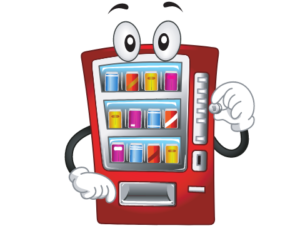Learn how to sell on Gimkit vending machines. Use in-game vending to trade items, earn GimBucks, and boost your score. Step-by-step guide to mastering vending in Gimkit.
How to Sell on Gimkit Vending Machines
Create secret purchases, trigger non-item actions, and control limited stock with Gimkit Creative.
What a Gimkit vending machine does
A vending device lets players spend a required resource (Cash or custom tokens) to receive an item or trigger an action via channels (open doors, buffs, spawns). You control visibility, interaction timing and stock scope (Player/Team/Global).
Step-by-step Setup
Open Creative & select your map
From Gimkit: Creative → open or create the map. Confirm you have editor rights to place devices.
Place a Vending Machine device
Devices → Vending Machine. Place it where players should interact. For hidden buys, ensure proximity area is precise.
Set Required Item & Amount
Choose the currency (e.g., Cash) and amount (e.g., 100) the player must spend.
Choose Purchase Action: Grant Item or Transmit
Grant Item provides a physical item. Transmit On Channel triggers non-item behavior (open door). If transmitting, wire the channel to the target device.
Set Stock & Scope
Enable Limited Stock to cap purchases. Scope options: Player (per player), Team (per team), Global (shared). Use Deactivate After Purchase for one-time events.
Visibility & Interaction Time
Toggle Visible In-Game. Choose interaction: instant vs hold (1–3s). Use hold for higher value items to reduce accidental buys.
Wire channels and test
Connect your vending channel to the target device (door open, buff). Test in Play mode with multiple players to confirm behavior.
Non-Item Purchases — transmit actions
Use Transmit On Channel when the buy should trigger an effect (unlock gate, enable buff, start event) rather than grant a tangible item.
In-game Look & Interaction tips
Visible In-Game
Show the device for obvious kiosks; hide it for secret purchase points. If hidden, add subtle in-world hints to guide discovery.
Item Icon & Label
Set a clear icon and label so players know what they buy — crucial for hidden machines.
Interaction Time
Use hold (1s) for important buys to avoid accidental spends; instant for low-cost items.
Feedback
Give a clear on-screen message and sound when purchase completes (“Gate unlocked!”). Visual effects add polish.
Limited stock — balance & scarcity
Limited stock controls how many times an item or action can be purchased. Choose scope to fit your design: Player, Team or Global.
Full Workflow Example — Secret Gate
- Place vending near corridor exit.
- Required Item = Cash; Amount = 150.
- Purchase Action = Transmit On Channel UNLOCK_GATE.
- Stock = 1; Scope = Global; Deactivate After Purchase = On.
- Wire UNLOCK_GATE to gate’s Open input and test.
Settings Template
Checklist & practical tips
- Test all scopes (Player/Team/Global) with multiple players before publishing.
- Use a short hold for high-cost buys to prevent accidental spending.
- Hide secrets with subtle environmental hints so players can find them without frustration.
- Name channels consistently: UNLOCK_GATE, BUFF_TEAM, SECRET_PURCHASE.
- Playtest with expected player counts and adjust stock or pricing as needed.
Recent Posts
Can Vending Machines Be Sold for Parts | Cost Estimator & Profit Guide
Selling Vending Machines for Parts (USA) ...
Japanese vending machines: From frozen slushies to puppy dispensers, explore the astonishing products in Japan's vending machine capital. Did you know that Japan is the ultimate vending machine...
